Thru-Hiking New Zealand: South Island Alpine
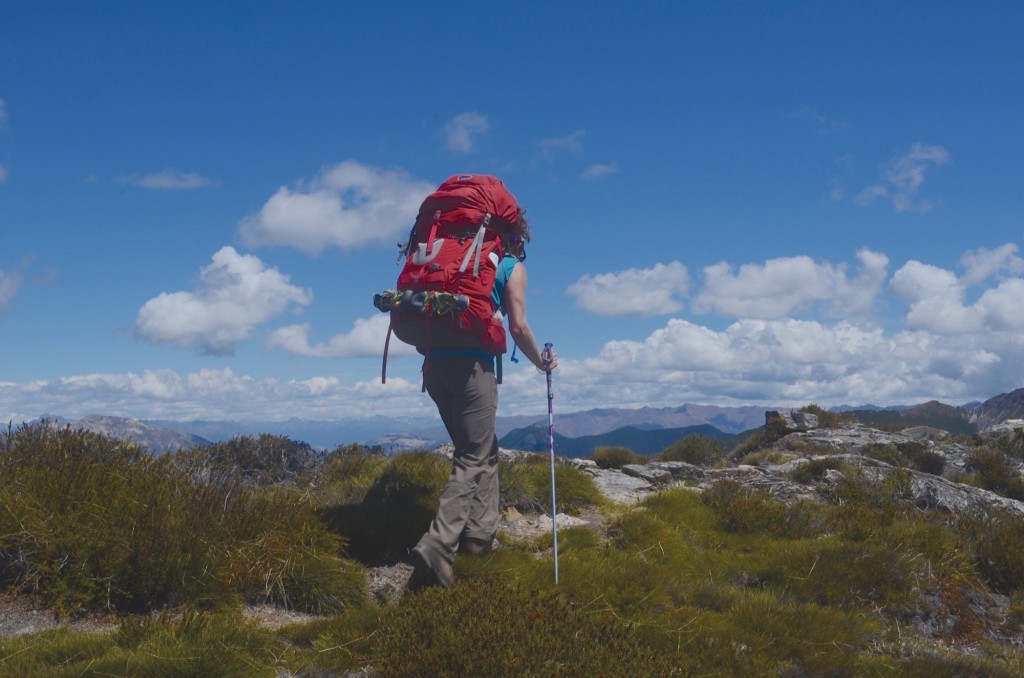
Rainforests are unfamiliar territory for one who was raised in the boundless American Southwest. But mountains feel like home, even if they’re over 10,000 miles away from the Rockies. After nearly two and a half months on New Zealand’s 3,000 km Te Araroa Trail, we cross the Cook Strait and arrive on the South Island where the mighty Southern Alps begin.
My dad and I had almost failed to appreciate the lush beauty of the North Island’s temperate rainforests. We longed for wide open skies pierced by sharp ridgelines and high alpine passes. And so, as we approach the Richmond Ranges near Nelson, we load eight days worth of food into our packs, ready for whatever the trail has to throw at us.
It tosses us straight up into dry, tinderbox forests. If you had picked me up out of New Mexico and dropped me blindfolded upon this hill, I might not have known the otherwise. We had grown accustomed to the ground sagging underfoot, but here it is hard and brittle as we climb for hours to treeline. Just as the trees break and long bare mountaintops appear, we spot the Starveall Hut.
From its vantage point, you can see the trail cutting a line up and across the barren ridgelines into the distance. I watch Dad look at the trail disappear over the mountain and know he is worried about not having enough food to make it out. I, however, am more concerned about carrying one too many day’s worth of provisions over endless mountains. Such was our developing dynamic.
Whether or not we’re packing too much ramen and instant mashed potatoes, we must push on the next day. We walk for most of the morning and afternoon above treeline, climbing and falling down steep, narrow ridges. There is little trail to speak of, except for a slim path previous trampers have beaten down. Judging from Starveall’s hut book, this track was fairly ill-frequented, but for TA trampers and a few locals. Most thru-hikers are either several days ahead or behind us. We see no one, except for two Kiwis.
After a brief “How do you do,” they warn us that water is running dry at many of the huts ahead. And the stream crossing I had seen on the map is apparently non-existent. Well, this could certainly make life interesting. We say “goodbye,” and carry on our separate ways.
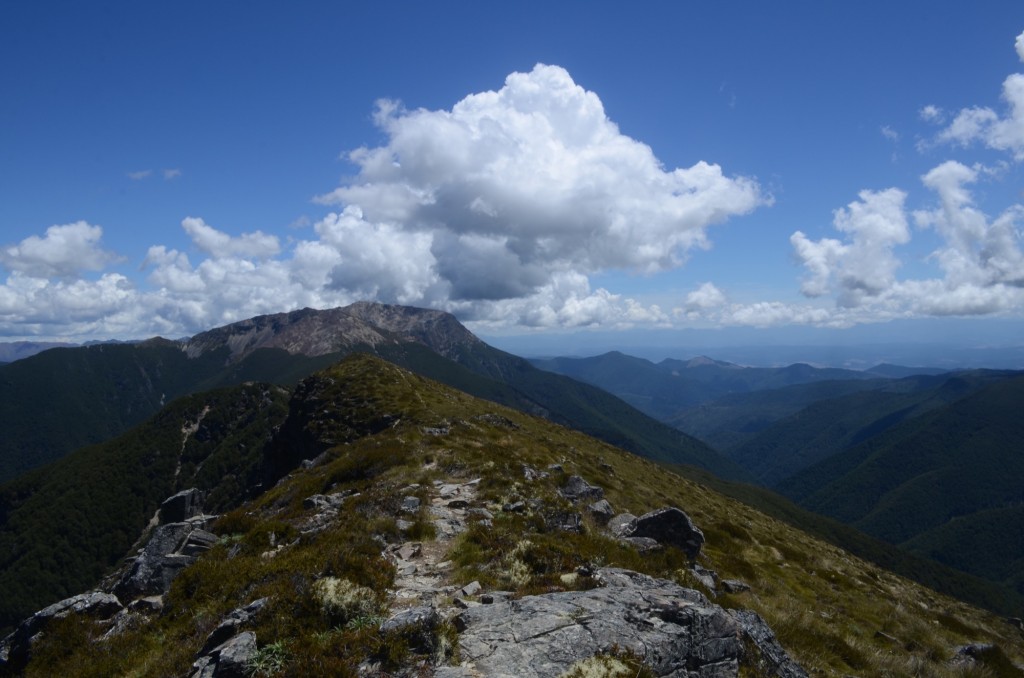
We reach the Old Man Hut by late afternoon and find the water tank to be about a quarter-full. In areas like the Richmond Ranges, there are very few natural water sources and trampers must rely on the rainwater collected at the huts. The last several months had been abnormally dry. Trampers and farmers alike were thirsty for rain.
In the morning, we each carry an extra liter of water, as we’re certain the next hut is dry. Of course, just as we’re wishing it would rain, the skies darken and a threatening mist creeps into the wooded hill we are climbing. When the small, stunted trees peter out at the base of Little Rintoul – the first of two mountains we will summit today – the trail markers completely disappear into the fog.
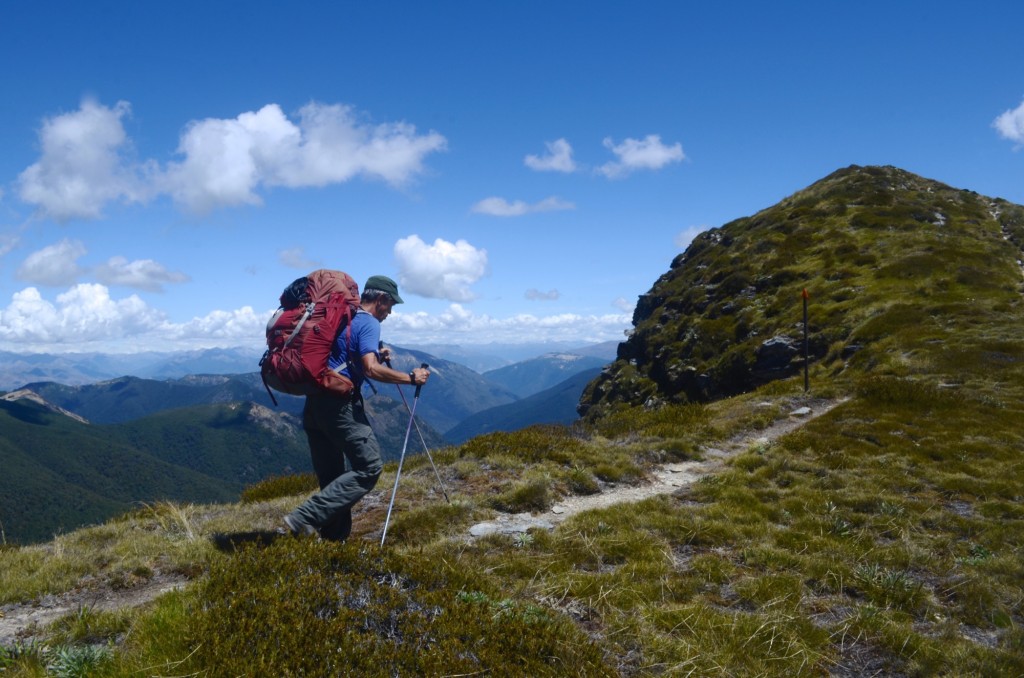
We hopscotch between the markers, Dad waiting at the last one while I push ahead to the next, hidden somewhere above us in the scree. The fog mutes our shouts and obscures everything beyond a five-foot radius. We sidle along steep drop-offs. Some indeterminate distance below, the valley floor is nothing more than an idea in the swirling grey mist. At last, when we reach the top of our second mountain, Rintoul, the clouds dissipate and reveal an incredible sight: the Tasman Sea. I had been so caught up in the mountains, I forgot we were still on a small island at the bottom of the world.
As the sun begins to set, we near the Tarn Hut; which sits next to a small, swampy pond in the trees. I catch sight of a pale, skinny old man with a big beard wading from the water. He doesn’t look like much of a tramper, with spindly legs, big glasses and a floppy hat. He’s a French professor at a local university and tomorrow he will make his third attempt at Rintoul, the mountain we had just climbed. Not for the last time would Te Araroa take us up and over, into, and through places others dream about and aspire to.
The next morning, we wish him good luck and set off south into boulder fields, narrow river gorges, and over more bald and grassy mountains. The trail demands our constant attention for fear of slipping off a river bank and plummeting into rushing waters, falling onto sharp volcanic boulders, or twisting an ankle on mossy tree roots.
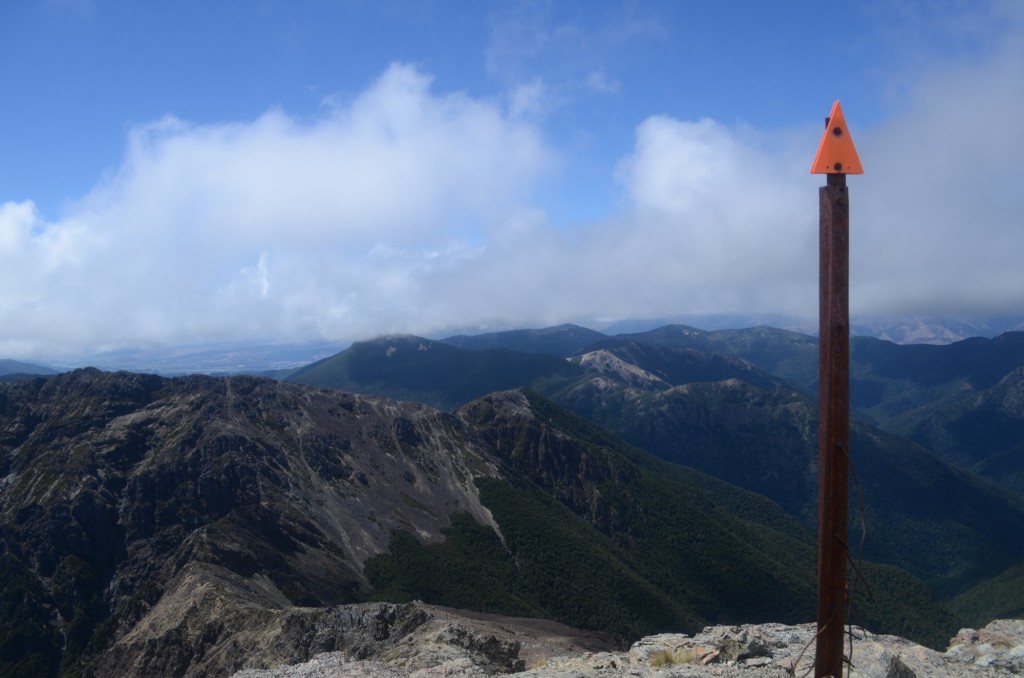
At last, after four more days of mental and physical exhaustion, we arrive at the Red Hills Hut in the pouring rain. A young Australian Northbounder sits in a corner reading a twenty-year-old copy of National Geographic. We claim our bunks, inhale a quick dinner, and fall fast asleep before dark.
The following morning, the 5km walk downhill to the highway is a pleasure. From here, the trail cuts directly south, following the Southern Alps. We will climb up and down, and up and down more high passes and barren tops: Travers Pass, Waiau Pass, Stag Saddle, and countless others by the time we reach Queenstown in the deep south.
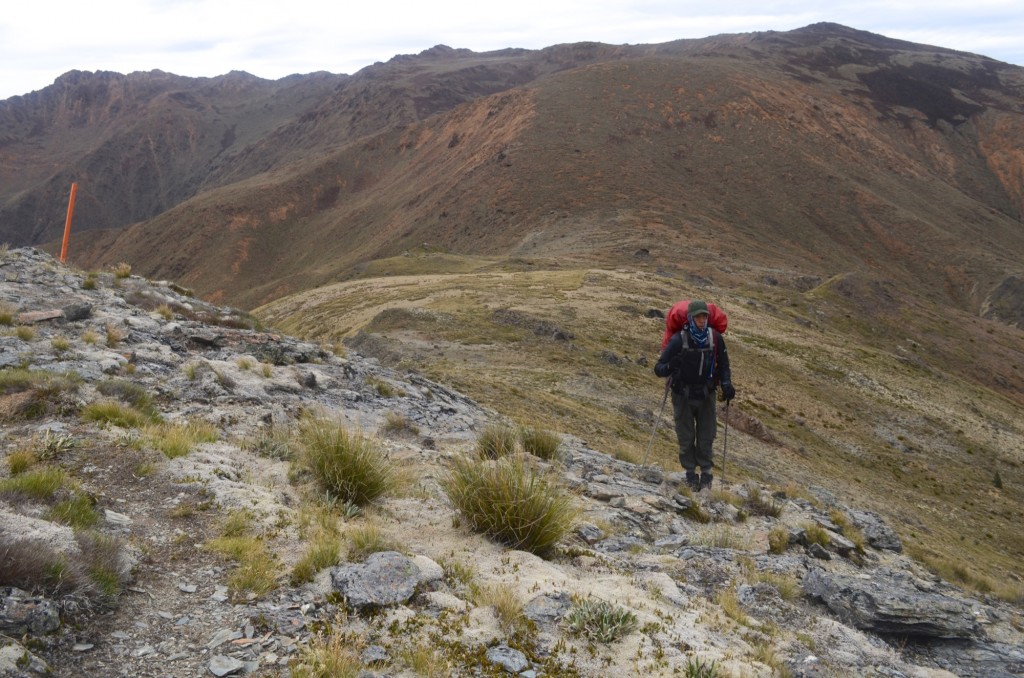
The New Zealand mountains prove to be more physically challenging than the rainforests we had so dreaded, but the vast emptiness of the South Island’s backcountry is unlike anything I have ever experienced. With the end of our journey approaching, I can’t help but anticipate the conclusion yet am already missing these mountains… Though we still have a few more to go.
Margaret Hedderman is hiking New Zealand’s 3,000 km Te Araroa Trail with her father. Read more about their adventures and watch videos from the trail at www.NewZealandOnFoot.com
